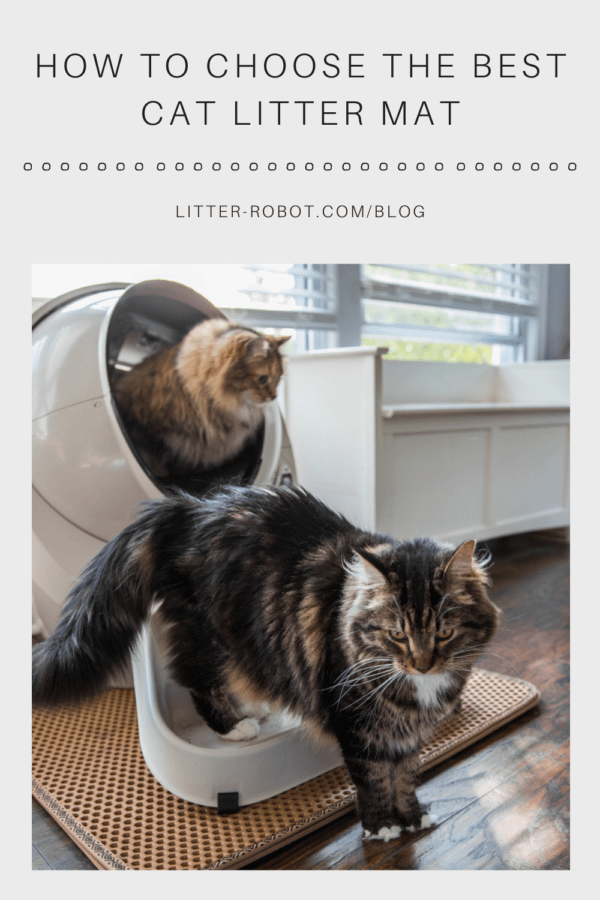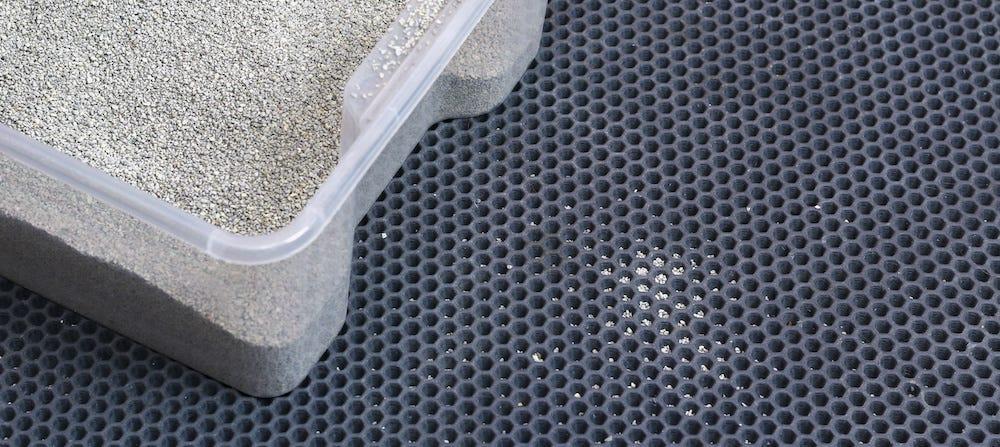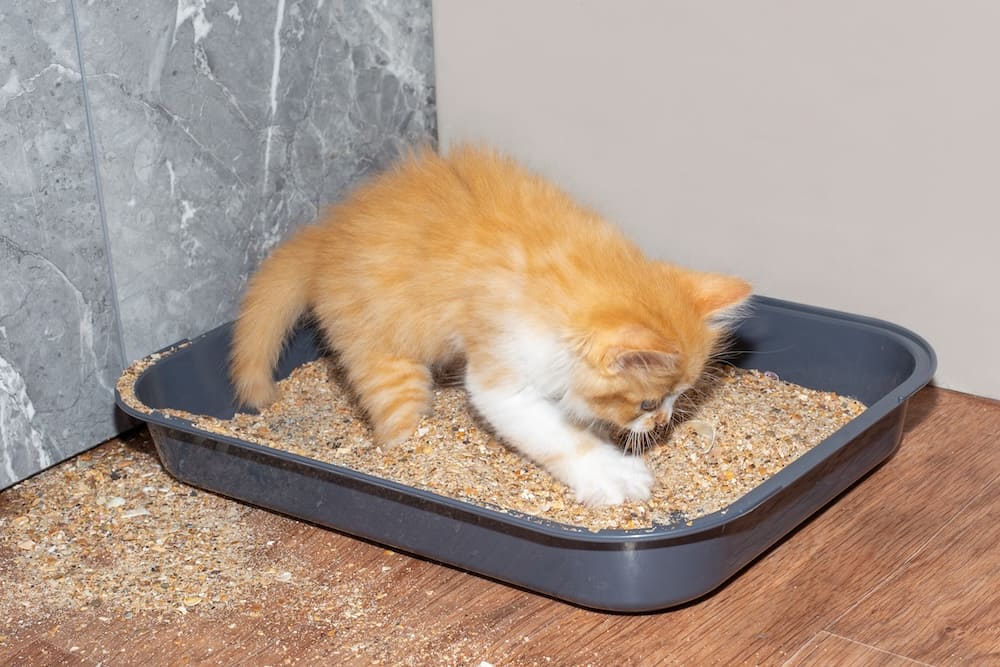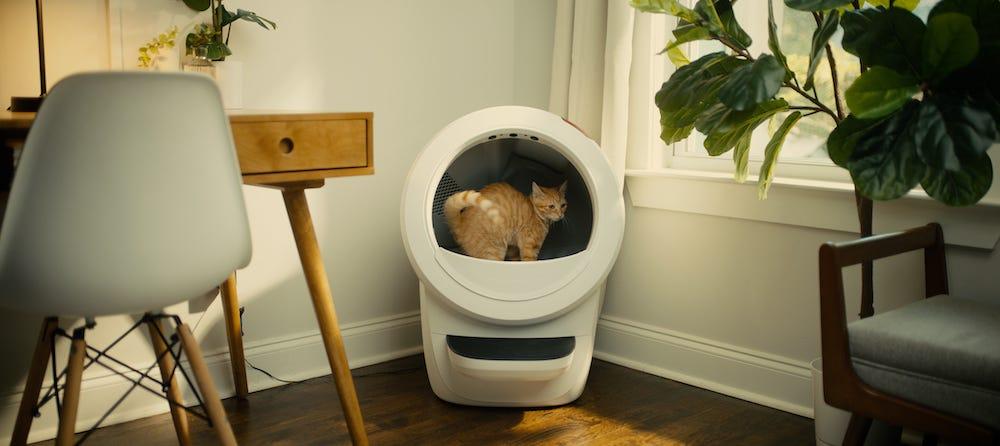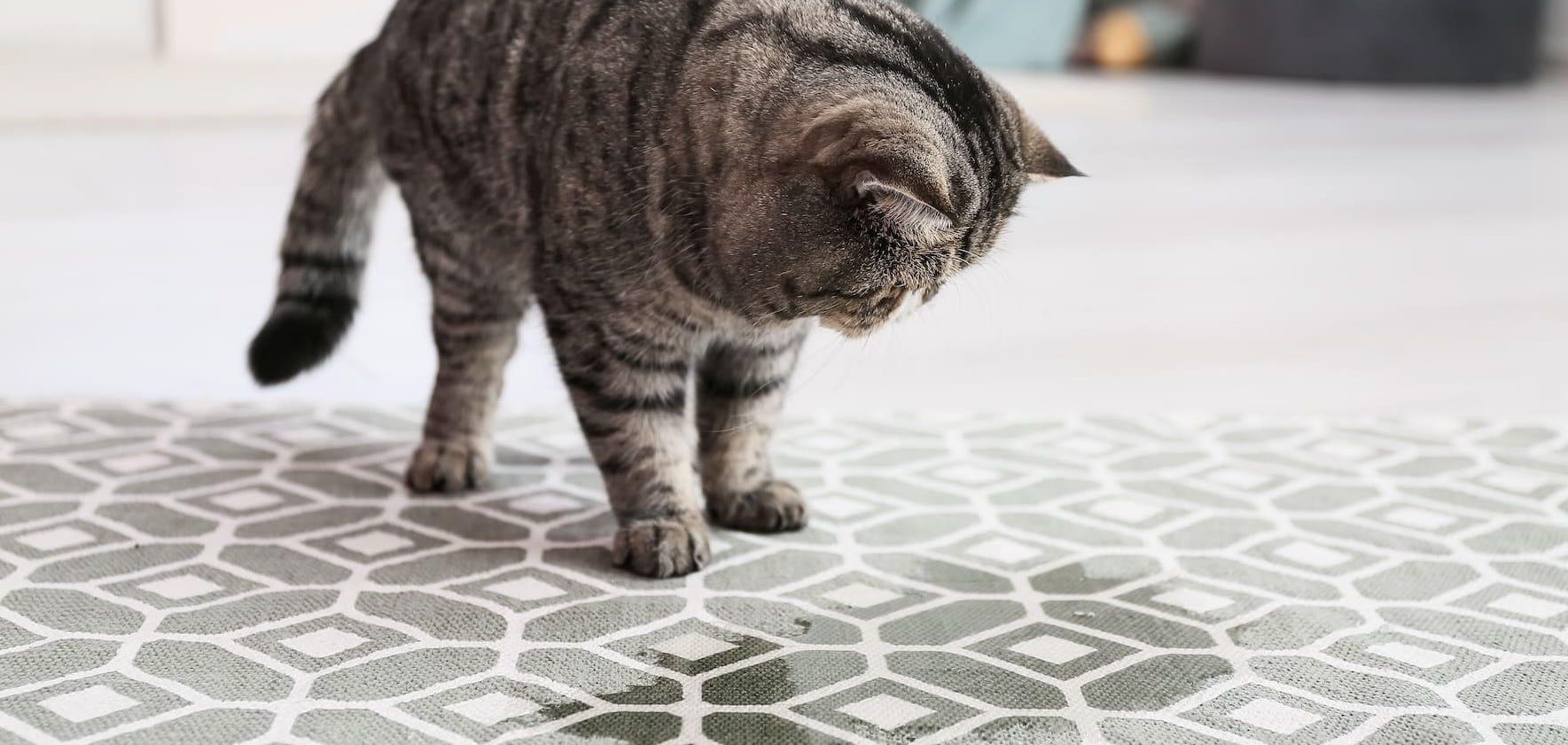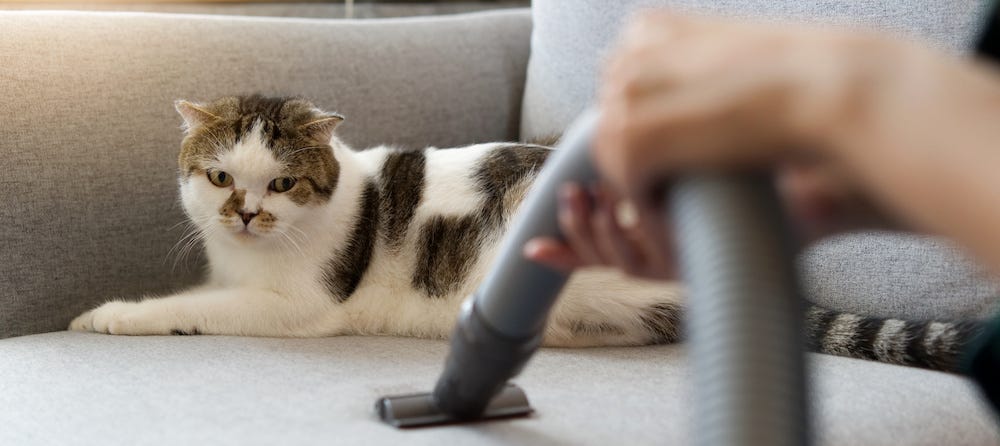Any cat parent knows how easily litter can be tracked from the litter box into your home—especially if your cat likes to dig in their box like they're searching for hidden treasure. A cat litter mat will help stop the spread of litter in your home and keep litter where it belongs.
So, how do you choose the right mat for you and your feline friend? This guide is going to help you pick the perfect litter box mat for whatever your needs are! Let’s “dig” in.
Why use a litter mat?
A litter mat is designed to catch small pieces of cat litter that get tracked out of the box by your cat. It’s basically a doormat for your cat’s litter box! These mats help stop litter from being spread around your home, ultimately keeping your space cleaner and more hygienic by stopping the potential spread of bacteria.
How do you choose a good cat litter mat?
Choosing the best cat litter mat for you and your pet depends on a few factors, such as:
- What type of litter do you use?
- Does your cat kick up litter?
- Does your cat like to scratch their mat?
- Does your cat ever pee next to the litter box?
Answering these questions will help you determine what mat best fits your needs in order to keep litter where it belongs.
For example, compared to wood pellet cat litter, clay-clumping litter results in more dust, especially if they are kiln-dried and not sun-dried like GreatLitter. With more litter dust comes more litter tracking, meaning you might need a more absorbent cat litter mat.
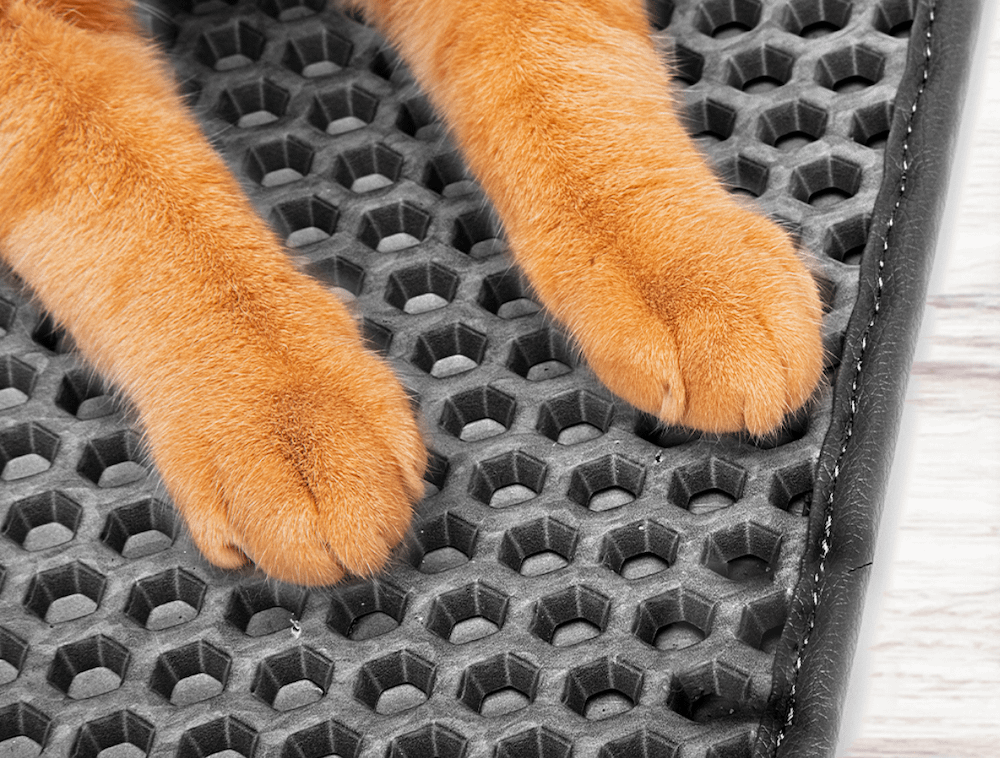
Features of the best litter mat
Among knowing your cat's litter tracking habits, there are a few other things to consider when it comes to choosing a cat litter mat that works for you. Quality, design, material, and even urine resistance matter. Let’s take a deeper look into how to choose the best cat litter mat.
Durable material
Look for mats that are made from high-quality materials. This may mean spending a little more money to get a better product. While everyone loves a good deal, sacrificing quality for a cheap mat means not only will you be replacing your mat more often, but you’ll also likely be dissatisfied with how well the mat stops the spread of litter.
Just like anything else, a cheap litter mat won’t hold up over time and you’ll end up having to continuously replace it… Especially if your cat likes to scratch their mats.
Look for these materials:
- Mesh: Mesh material typically contains coils and grooves that effectively capture litter.
- PVC: This material is highly durable, easy to clean, and can trap litter effectively.
- Rubber: Rubber is extremely durable and flexible, so it’s easy to shake out and clean.
- EVA foam: This high-quality foam is amazing at trapping litter dust and is more durable than other types of foam.
Avoid the following materials:
- Thin plastic: Low-quality, thin plastic mats can break easily and may not trap litter effectively. They are also less comfortable for cats to walk on.
- Fabric/cotton: These materials are less durable and tend to wear out quickly.
A litter-catching mat should also be comfortable for your cat’s paws. EVA foam (a type of mesh) is plushy on paws while effectively reducing litter tracking.
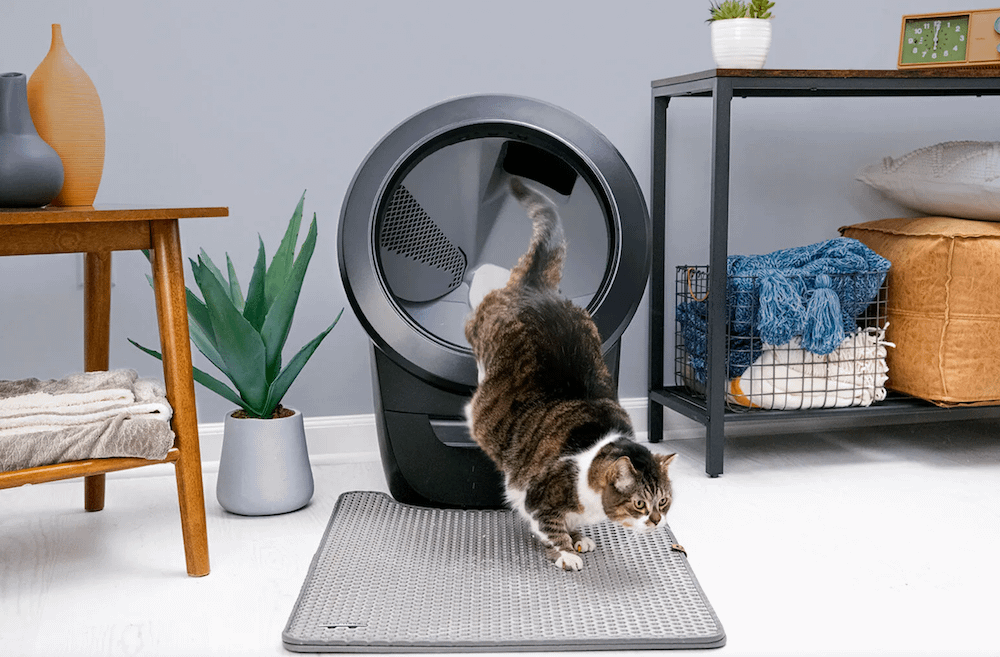
Design
When it comes to a cat litter tracking mat, design matters. For example, a dual-layer litter mat is designed so that litter falls through the top layer and becomes trapped in place on the mat below. This type of mat is made for heavy-duty messes and guaranteed to catch litter granules.
Having a litter mat that integrates right into the litter box creates a seamless feel, making the litter box less of an eyesore. You get a high-end look when you purchase a litter mat and litter box designed to fit one another, such as Litter-Robot and the LitterTrap® Mat.
For a traditional litter box, ensure that the mat fits snugly against the sides of the box. You may have to buy several mats or place the entire box on one large litter mat to guarantee this.
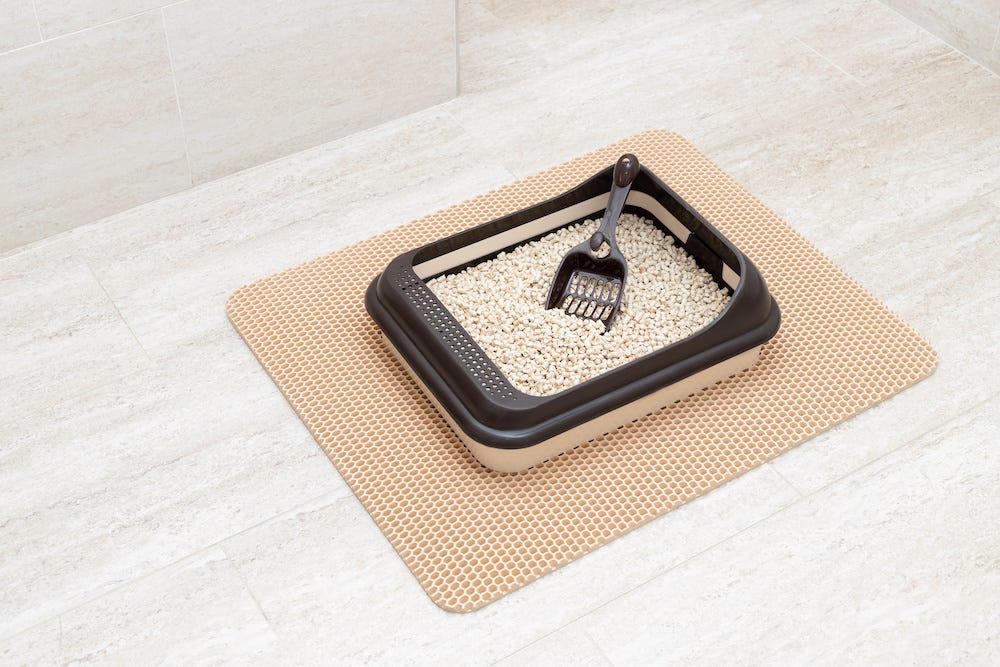
Urine resistance
Accidents happen, which is why it’s ideal for your litter mat to have waterproof properties. The best mat is urine-repellent or includes a urine-resistant layer. Usually this type of mat includes a plastic film that makes it easy to clean after accidents. All you have to do is wipe clean!
If your cat regularly pees next to the litter box, consider visiting your vet to rule out medical issues. Your cat may also display this behavior when the litter box isn’t cleaned often enough or the litter box is too small.
Scratch resistance
If your cat likes to scratch on rugs and mats, you’ll want to look for a durable mat that holds up well against their claws. A high-quality mesh will usually do the trick here. You can also place a scratching post or cat furniture with a built-in scratcher nearby. Regardless, you’ll want to keep your cat’s claws regularly trimmed.
Get tips on how to keep cats from scratching furniture.
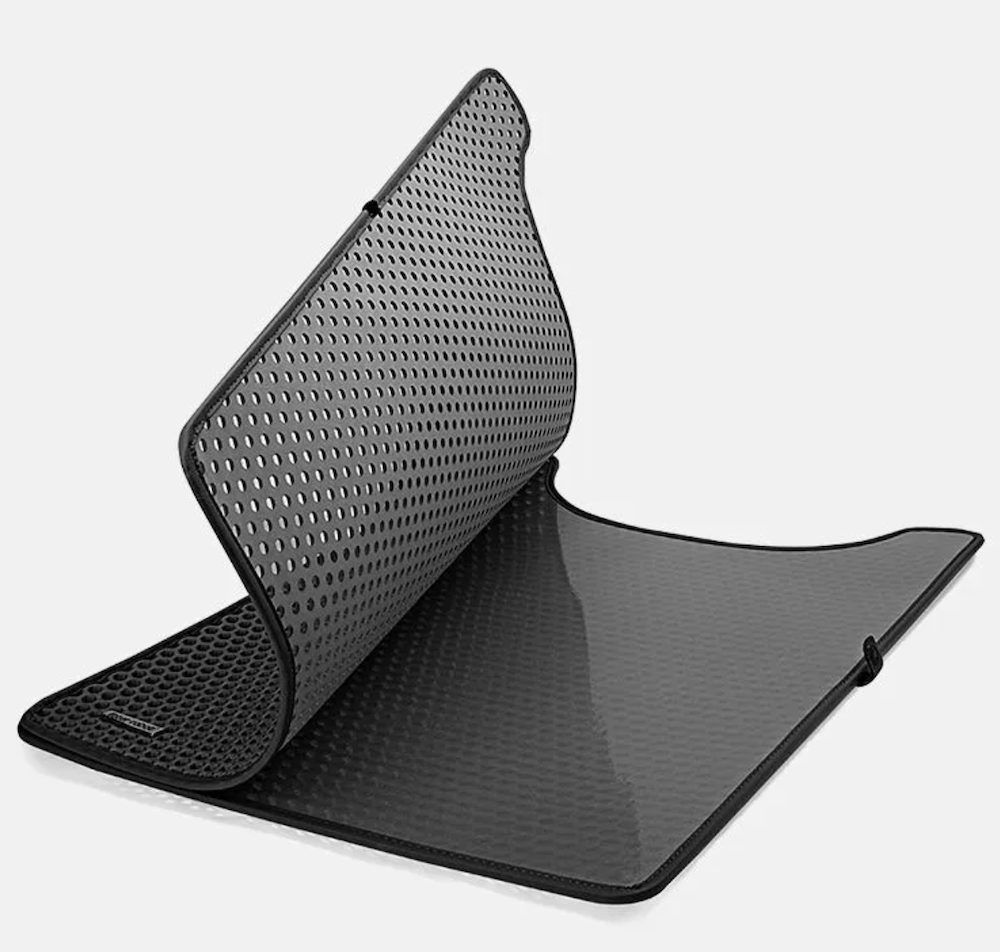
Litter mat cleaning
You should be able to easily clean your litter mat. For a standard litter mat, you should only have to follow these steps:
- Shake the litter mat outside or over a trash bag.
- Vacuum the litter mat.
- If further cleaning is needed, rinse the litter mat in cold water.
In the case of a litter-trapping mat, cleaning should be as simple as this:
- Lift the mesh lining.
- Dump the litter granules resting on the mat below into a trash bag.
- Wipe the mat clean as needed.
For more cleaning tips, read our cleaning tips guide.
How to stop litter tracking
In addition to utilizing a well-designed, durable cat litter mat, there are other methods to stop litter tracking.
Use a covered litter box
An enclosed or covered litter box can help with litter tracking and residue, particularly if you use dusty cat litter; it’s also better at reducing odors than an open litter box. A covered litter box like Litter-Robot 4 provides your cat with a clean bed of litter every time, potentially eliminating their need to dig and fling litter around while they look for a fresh spot to go.
Invest in low-tracking cat litter
Use a low-dust, low-tracking litter such as sun-dried clay. Silica or crystal litters are also known for their low dust content.
Place the litter box strategically
Place the litter box in an out-of-the-way room; less foot traffic means less litter tracking. You can also put the litter box inside a piece of furniture to help curb the spread of litter, as long as the litter box is still easy for your cat to access.
Use litter tracking accessories
A litter box ramp catches litter on your cat’s paws upon exiting, while a fence acts as a barrier against kicked-up litter. But the ultimate litter box accessory for messy cats is the Litter-Robot 4 Shield. The shield keeps litter contained for cats that love to kick and dig.
For more tips check out our full litter box guide!
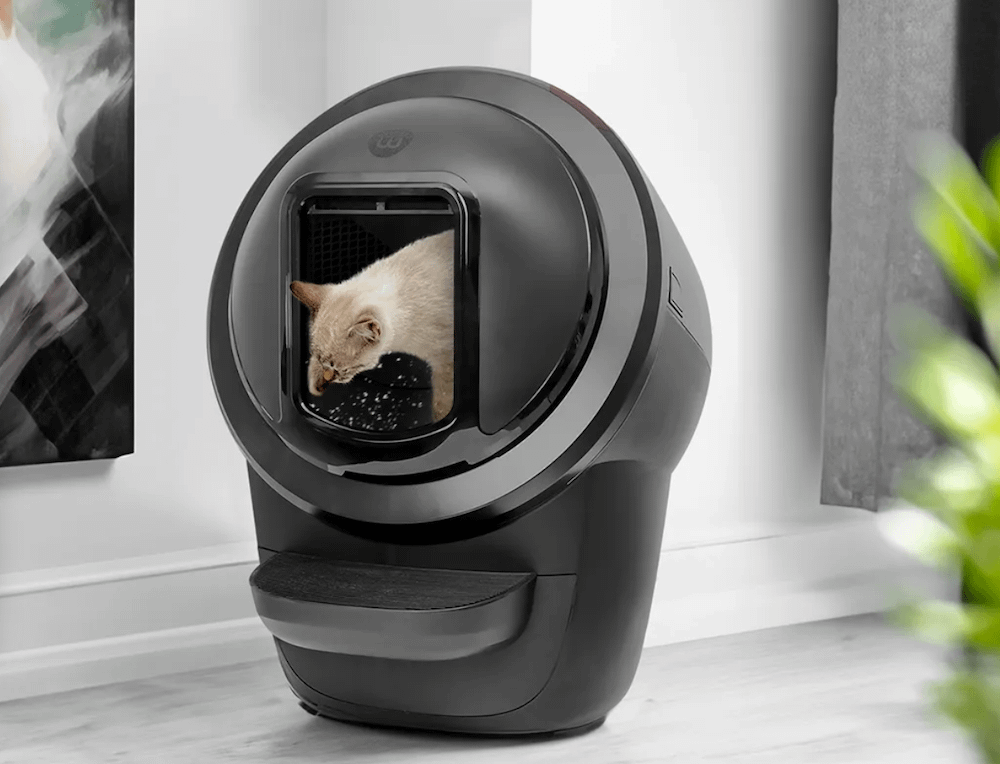
So, do litter mats work? Absolutely! The best way to stop your cat from getting litter everywhere is to put a litter mat outside their litter box. However, not all litter mats are created equal. Use our checklist of innovative features to decide which litter mat is right for you and your cat.
